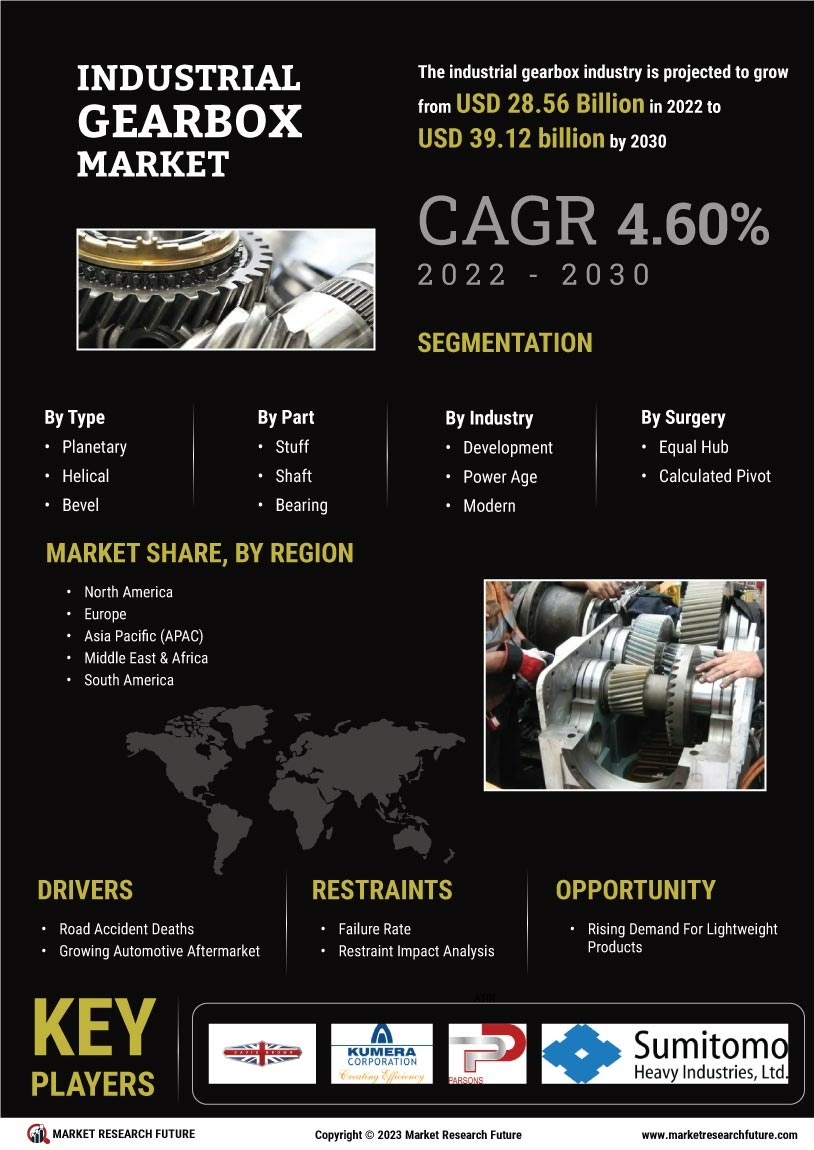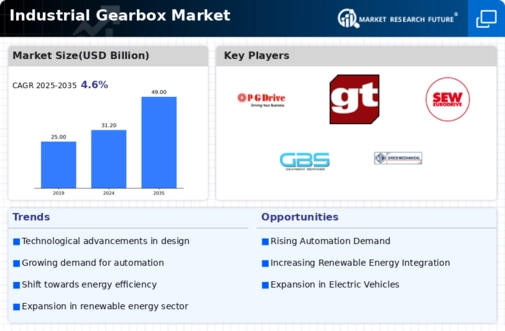Expansion of Automation in Manufacturing
The Industrial Gearbox Market is significantly influenced by the ongoing expansion of automation in manufacturing processes. Industries are increasingly adopting automated systems to enhance productivity and reduce operational costs. Gearboxes play a crucial role in these systems, providing the necessary torque and speed control for various machinery. The automation market is expected to grow at a compound annual growth rate of approximately 10%, which directly correlates with the demand for industrial gearboxes. This trend suggests that as manufacturing becomes more automated, the Industrial Gearbox Market will likely see a corresponding increase in demand.
Rising Demand in Renewable Energy Sector
The Industrial Gearbox Market is experiencing a notable surge in demand due to the increasing investments in renewable energy sources. Wind and solar energy projects require robust gearboxes to convert mechanical energy into electrical energy efficiently. As countries strive to meet their renewable energy targets, the need for high-performance gearboxes is likely to escalate. In 2025, the renewable energy sector is projected to account for a significant portion of the gearbox market, with estimates suggesting a growth rate of over 8% annually. This trend indicates a shift towards sustainable energy solutions, thereby driving the Industrial Gearbox Market forward.
Technological Advancements in Gearbox Design
The Industrial Gearbox Market is benefiting from continuous technological advancements in gearbox design and manufacturing processes. Innovations such as lightweight materials, improved lubrication systems, and enhanced gear profiles are leading to more efficient and durable gearboxes. These advancements not only improve performance but also reduce maintenance costs, making them more appealing to end-users. The market for advanced gearboxes is expected to grow, with projections indicating a potential increase in market share by 15% over the next five years. This trend suggests that as technology evolves, the Industrial Gearbox Market will likely adapt and expand accordingly.
Increasing Focus on Industrial Safety Standards
The Industrial Gearbox Market is also influenced by the increasing focus on industrial safety standards across various sectors. Regulatory bodies are implementing stricter safety guidelines, necessitating the use of high-quality gearboxes that meet these standards. This trend is particularly evident in industries such as mining, oil and gas, and manufacturing, where equipment failure can lead to severe consequences. As companies strive to comply with safety regulations, the demand for reliable and safe gearboxes is expected to rise. This focus on safety is likely to drive growth in the Industrial Gearbox Market, as manufacturers seek to provide compliant and high-performance solutions.
Growth in Construction and Infrastructure Development
The Industrial Gearbox Market is poised for growth due to the ongoing construction and infrastructure development projects worldwide. As urbanization accelerates, there is a rising need for heavy machinery and equipment, which rely heavily on industrial gearboxes for efficient operation. The construction sector is projected to grow at a rate of around 7% annually, driven by government initiatives and private investments in infrastructure. This growth is expected to create a substantial demand for gearboxes, thereby positively impacting the Industrial Gearbox Market. The correlation between construction activities and gearbox demand is likely to remain strong in the coming years.


















Leave a Comment